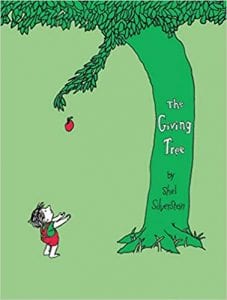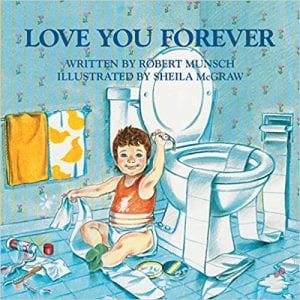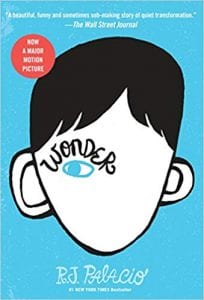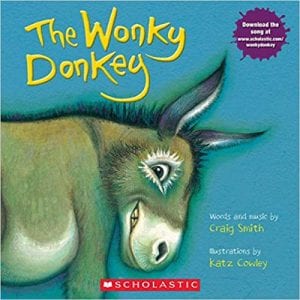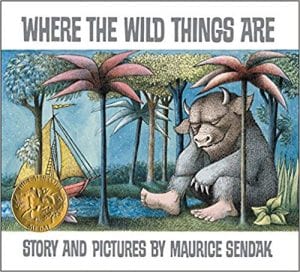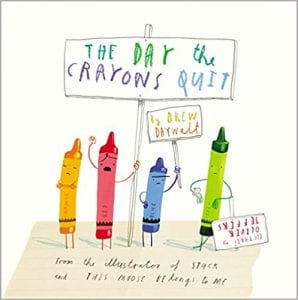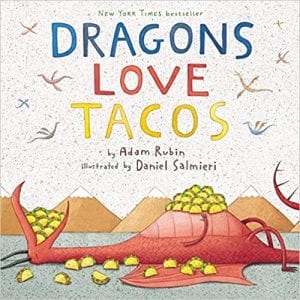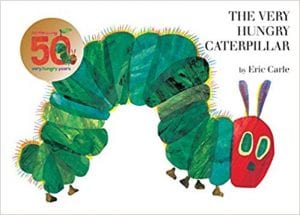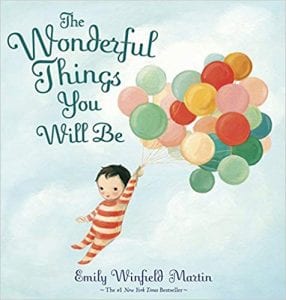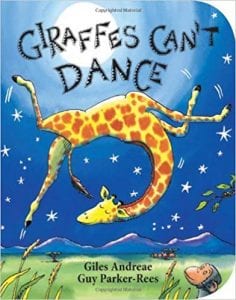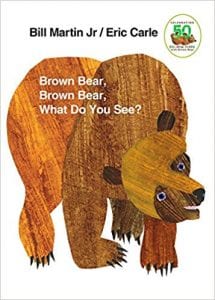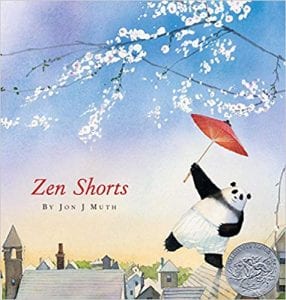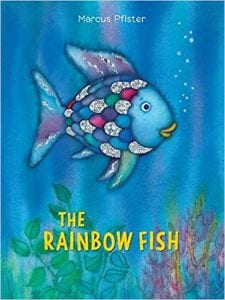The Best Children’s Books
We looked at the top 13 Children's Books and dug through the reviews from 99 of the most popular review sites including and more. The result is a ranking of the best Children's Books.
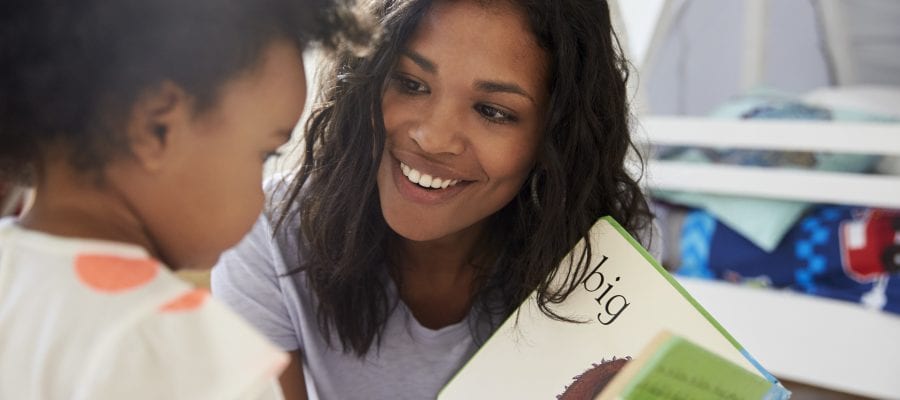
Our Review Process
Don't Waste Your Money is focused on helping you make the best purchasing decision. Our team of experts spends hundreds of hours analyzing, testing, and researching products so you don't have to. Learn more.
Our Picks For The Top Children's Books
- 1. Shel Silverstein The Giving Tree
- 2. Robert Munsch Love You Forever
- 3. R.J. Palacio Wonder
- 4. Maurice Sendak Where the Wild Things Are
- 5. Drew Daywalt The Day the Crayons Quit
- 6. Adam Rubin Dragons Love Tacos
- 7. Craig Smith The Wonky Donkey
- 8. Eric Carle The Very Hungry Caterpillar
- 9. Emily Winfield Martin The Wonderful Things You Will Be
- 10. Giles Andreae Giraffes Can’t Dance
- 11. Bill Martin Jr. / Eric Carle Brown Bear, Brown Bear, What Do You See?
- 12. Jon J Muth Zen Shorts
- 13. Marcus Pfister The Rainbow Fish
Shel Silverstein’s "The Giving Tree" is a unique tale that shares the lesson of being selfless and helping others as much as possible. The story teaches young children how to be happy when giving to others without expecting anything in return. However, it can also be seen as a story about a boy who never learns his lesson, and keeps taking from t...
Shel Silverstein’s "The Giving Tree" is a unique tale that shares the lesson of being selfless and helping others as much as possible. The story teaches young children how to be happy when giving to others without expecting anything in return. However, it can also be seen as a story... Read More
"Love You Forever" by Robert Munsch is a heart-melting story that will make any parent or caregiver cry. About a mother’s undying love for her son, this book is filled with vivid imagery and a lovely rhythmic sound. The book is a fixture in many parents’ reading lists for their young children.
"Love You Forever" by Robert Munsch is a heart-melting story that will make any parent or caregiver cry. About a mother’s undying love for her son, this book is filled with vivid imagery and a lovely rhythmic sound. The book is a fixture in many parents’ reading lists for their young children.
R.J. Palacio really hits it out of the park with “Wonder." This book gives readers a serious story with such light-hearted surroundings. There is truly no other fiction book like it. You will want to read it over and over again.
R.J. Palacio really hits it out of the park with “Wonder." This book gives readers a serious story with such light-hearted surroundings. There is truly no other fiction book like it. You will want to read it over and over again.
"The Wonky Donkey" by Craig Smith is sure to make readers of all ages laugh out loud. It is a captivating read, thanks to the funny sounds, repetitive rhythmic phrases and hilarious illustrations.
"The Wonky Donkey" by Craig Smith is sure to make readers of all ages laugh out loud. It is a captivating read, thanks to the funny sounds, repetitive rhythmic phrases and hilarious illustrations.
Buying Guide
- The most important element in choosing the perfect children’s book is the story. What is the book about and how does it relate to your child and your family? “Love You Forever” by Robert Munsch is about the unconditional and timeless love between a parent and child, so it’s a very relatable story that many families are familiar with. On the other hand, “The Wonky Donkey” by Craig Smith is about a donkey with three legs and the adventures he has. “The Giving Tree” by Shel Silverstein is about a little boy and his relationship to a tree throughout the course of his life. “Where the Wild Things Are” by Maurice Sendak is a classic about a little boy named Max who wreaks havoc at home while dressed in his wolf costume. He is so naughty that he gets sent to bed without dinner, only to discover that his room has transformed into a mysterious jungle, where he meets some wild things.
- For some parents, it’s important for children’s books to have important life lessons that they can teach their kids. Reinforcing lessons through books helps children to remember them and embody them. The lesson in Robert Munsch’s “Love You Forever” is about the importance of family. No matter where you go in life or what happens to you, your family will always be there to love you. In “The Giving Tree” by Shel Silverstein, the lesson is somewhat ambiguous. It’s not clear whether the book is about unconditional and selfless giving, as it can also be seen as a story about a boy who doesn’t learn his lesson. “The Wonky Donkey” by Craig Smith finds the humor in all things, while “Where the Wild Things Are” by Maurice Sendak teaches kids how to use their imaginations when they are feeling big emotions.
- It’s no secret that a child’s attention span isn’t very long. Some children can sit for books that take ten or more minutes to read, while others want to read books that only take a minute or two. “The Wonky Donkey” by Craig Smith is a quick and enjoyable read, while Robert Munsch’s “Love You Forever” and Shel Silverstein’s “The Giving Tree” are a little longer. “Where the Wild Things Are” by Maurice Sendak has under 350 words, but it can take a while thanks to the fanciful illustrations.
- Consider the format you want to buy your book in. There are many more options than just paperback books these days. Depending on the ages of your kids and the way you like to read, you may choose a different option for format. “Love You Forever” by Robert Munsch is available as an ebook, hardcover, paperback, audio CD and board book. On the other hand, “The Wonky Donkey” by Craig Smith is only available as an ebook and paperback. Similarly, Shel Silverstein’s”The Giving Tree” is only available as an ebook and hardcover. “Where the Wild Things Are” by Maurice Sendak can be bought as a hardcover, paperback, multimedia CD and audio CD.
- Kids can be rough with their books, so price may be a purchasing factor, especially if you have to replace books often. “Love You Forever” by Robert Munsch is available for under $10 in hardcover, while Shel Silverstein’s “The Giving Tree” can be found for under $12 in the same format. Paperback versions of “The Wonky Donkey” by Craig Smith are available for under $5 while “Where the Wild Things Are” by Maurice Sendak is available for under $8.
Why we recommend these children's books?
Products Considered
Products Analyzed
Expert Reviews Included
User Opinions Analyzed
Our experts reviewed the top 13 Children's Books and also dug through the reviews from 99 of the most popular review sites including and more. The result is a ranking of the best of the best Children's Books.
DWYM is your trusted roduct review source. Our team reviews thousands of product reviews from the trusted top experts and combines them into one easy-to-understand score. Learn more.
The Best Bang For Your Buck
Craig Smith The Wonky Donkey
Key Takeawy
"The Wonky Donkey" by Craig Smith is sure to make readers of all ages laugh out loud. It is a captivating read, thanks to the funny sounds, repetitive rhythmic phrases and hilarious illustrations.
What other experts liked
What other experts didn't like
What to Look For
Reading to young children is an activity many parents and caregivers love to do. For many families, reading is part of the daily routine. Many caregivers enjoy reading to kids before naptime and bedtime to help them relax and settle down. However, reading can be done at any time of day! It’s a perfect activity for sitting down during playtime or even while at the park or playground. Not only is it useful for bonding with your child, reading has many developmental benefits too.
Did you know that reading to children promotes brain development, social skills and verbal communication skills? Reading helps children to learn new sounds and understand new words within context. Books that are repetitive or have a rhyme or rhythm are particularly beneficial for helping children improve their verbal communication skills. By hearing certain sounds over and over again, children learn to mimic those sounds and words. The tempo of a book can help a child to memorize the lines and repeat them during the story and during playtime.
Books also help to stimulate a child’s imagination and grow their curiosity about the world around them. Stories help children to understand the difference between real and make-believe. Playing pretend is an integral part of growing up, and books help to encourage imaginative play activities. Children often impersonate the stories they learn through reading in their playtime activities. If you read a book about a dog running through the park, you may find that your child pretends she is that dog running through the park herself during her next playtime!
Books also help children understand transformative events, such as the birth of a new sibling or the death of a loved one. Books can help children learn the importance of developmental milestones, such as potty training or drinking from a sippy cup. They can teach children about important life lessons, such as how to share with others or how to take turns with friends. Stories also help children to verbalize complex emotions such as love, anger, sadness and confusion.
It’s never too early or too late to start reading with your child. While there are many developmental benefits to reading, nothing beats snuggling with your little one and reading a story you both love.
More to Explore
Children’s books have been around for several centuries, well before the printing press was invented in the 1400s. In fact, some of the first children’s stories that used both words and illustrations, and were created to be enjoyed by young readers, are Japanese illustrated scrolls that were said to be made in the 12th and 13th centuries.
However, the tradition of storytelling itself dates much further back all across the world. Even though those stories were not written down or illustrated, parents have known the powerful effect stories have on children. Irish folk tales can be traced back as far as 400 BCE, while the tradition of oral storytelling for children reached its peak in Imperial China in 900 AD.

